Create and edit views
Create, modify, or delete analysis-ready tables that can be queried from any workbook.
With views, you can transform the raw data from your connected datasources into an analysis-ready format using SQL. Once saved, views can be synced to your data schema and queried from any workbook for further analysis. Views can also build on top of each other, enabling you to build more complex data transformations.
If you signed up to use Equals for ARR reporting, once you've completed your initial sync with Stripe, you'll find two auto-generated views that power your ARR Build. These views can be queried in any workbook but cannot be edited. See Using your ARR Build views to learn more.
Manage all views you have access to from the views list, located in the left sidebar of your Equals workspace.
Views can be created for all Equals Warehouse-supported datasources:
- Amplitude
- Hubspot
- Intercom
- Mixpanel
- Quickbooks
- Salesforce
- Segment
- Shopify
- Stripe
- Xero
- Zendesk
Creating views
To create a new view:
- Go to the views list.
- Click
Create viewin the top-right corner. - Select a datasource that has already been configured for your workspace.
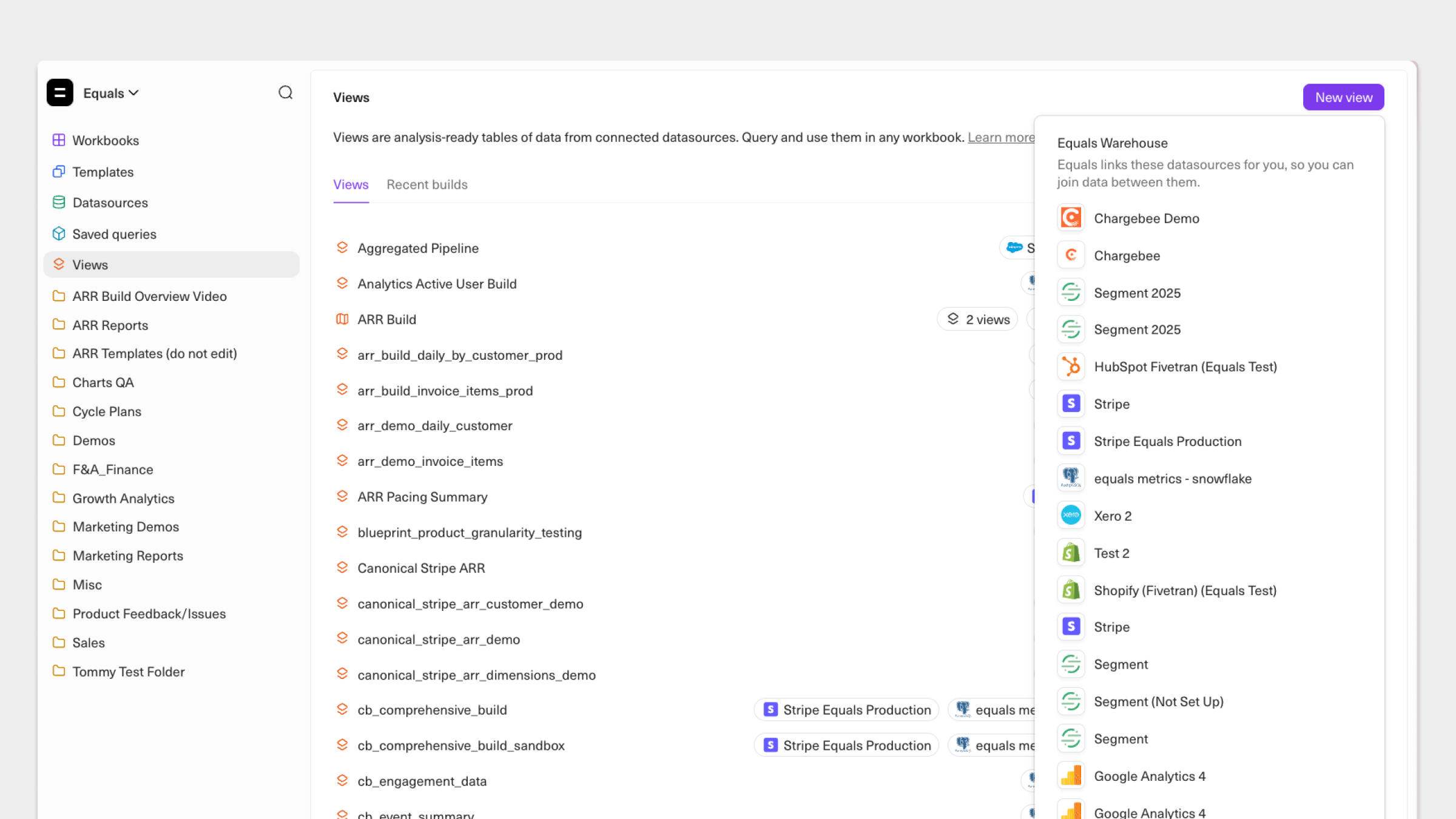
From here, you'll be dropped into the view editor. In the view editor, you can:
- Write SQL to define your view.
- Use the table browser to search for specific tables to include in your view.
- Preview your view at any point by clicking
Preview(or hittingCMD + Enter). - Select the ⚙️ icon to give your view a name and description. The name you give your view will be automatically converted into a table name as it will appear in your data schema.
When ready, select Create view to save and sync your view to the data schema in your Equals Warehouse. When your sync is complete, you will see a confirmation notification at the top of your workbook.
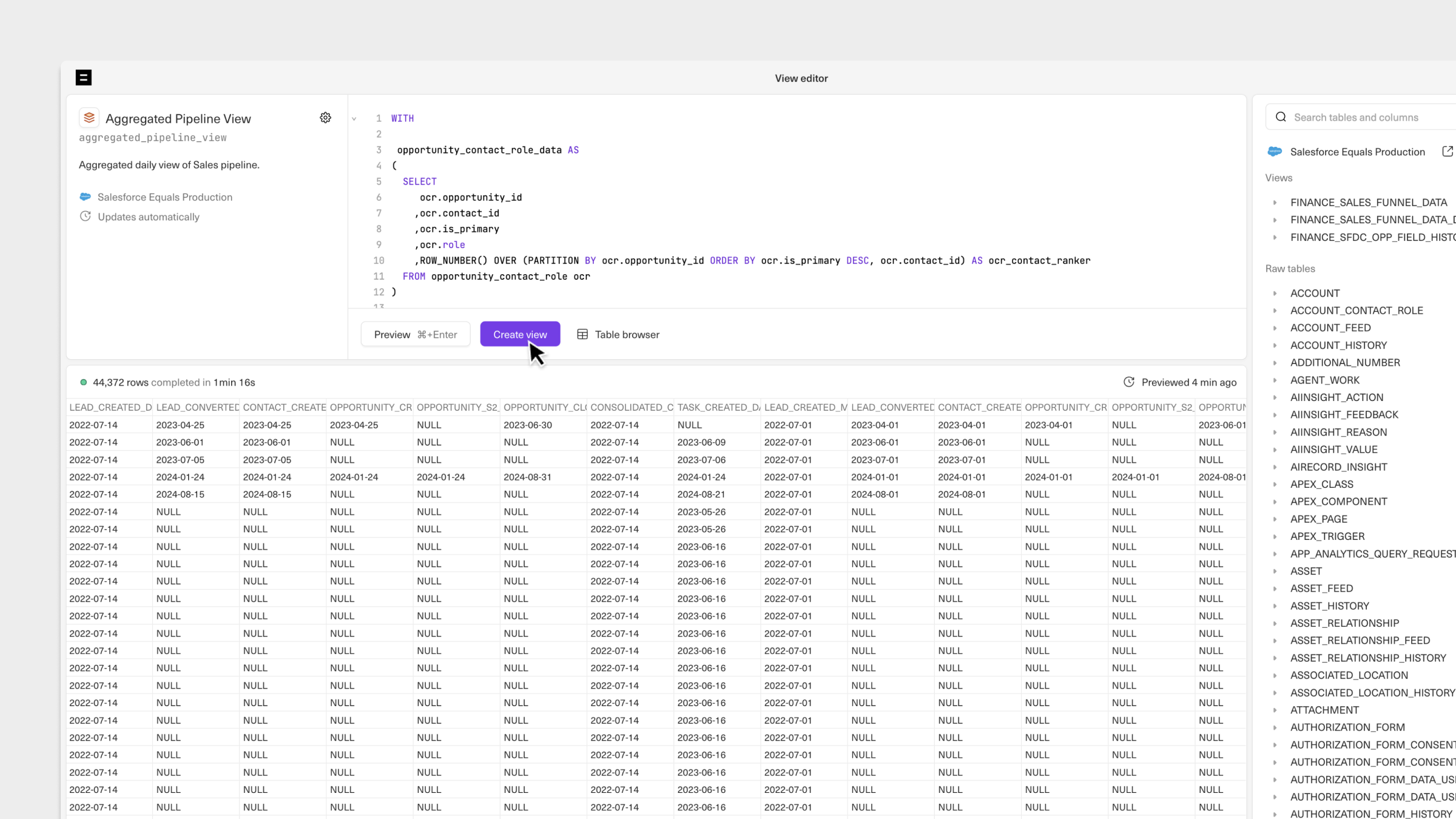
Creating dependencies between views
To build more complex transformations, you can create views that reference and build on top of each other in the right order:
- Using the SQL editor, reference the table name of another view as you would any table in your data schema.
- You can also use the table browser to identify the view you want to reference.
- Preview your view at any point by clicking
Preview(or hittingCMD + Enter). You must preview your view at least once before saving it. - Select
Save and rebuildto save changes to the view and sync to Equals Warehouse.
After syncing the dependent view, you'll see it listed in the Used by… section of the view that it references (located in the view details panel on the left side of the view editor).
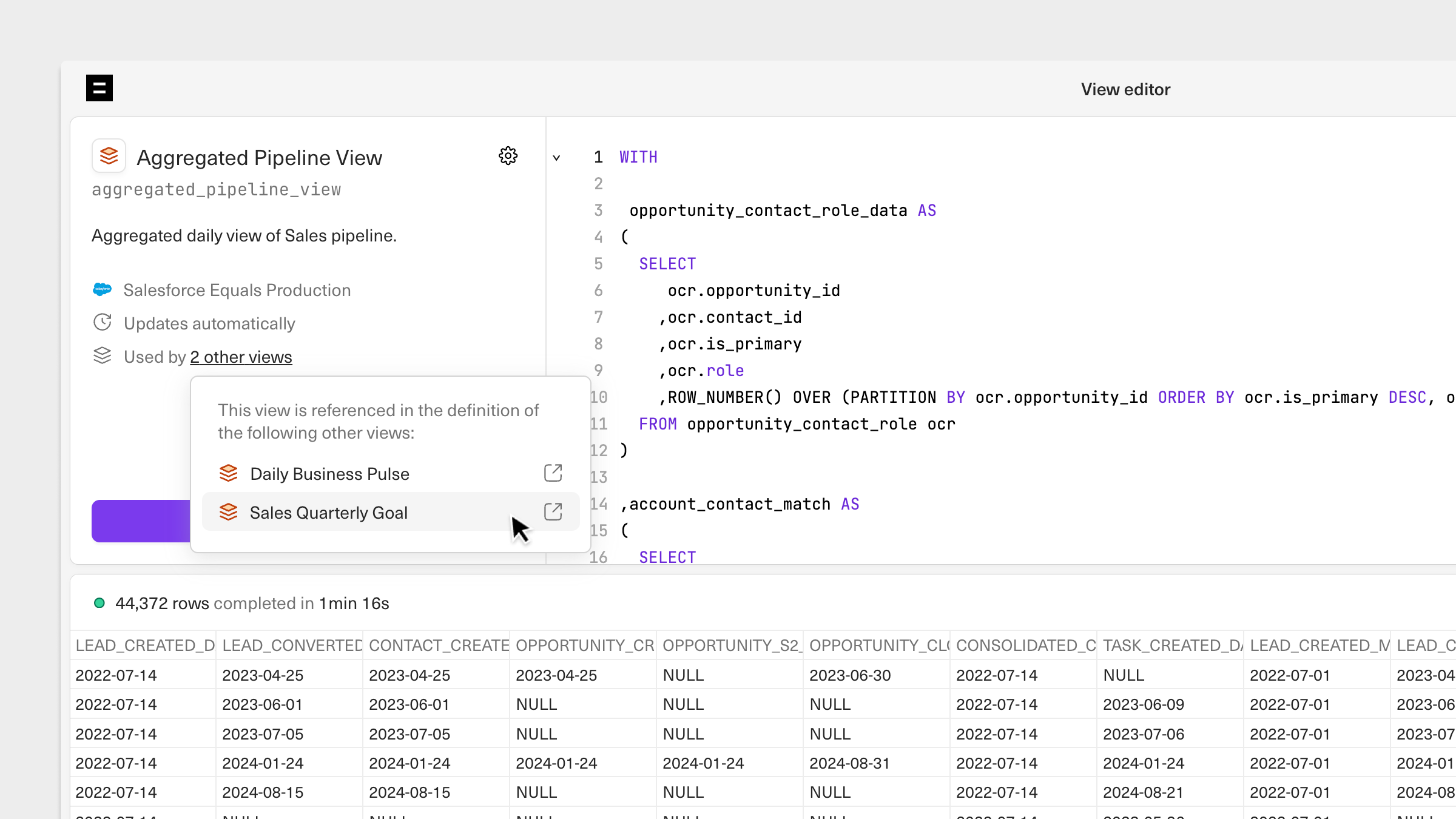
Joining views
Any views that are built with datasources supported by Equals Warehouse can also be joined. For example, you can join Salesforce and Stripe views to create a unified view of ARR and sales pipeline movements.
To join two existing views:
- Create a new view, selecting a datasource that corresponds to a view you want to join.
- In the view editor, select both views and write a
JOINorUNIONto append them into a single view. - Select
Create viewto save and sync your joined view.
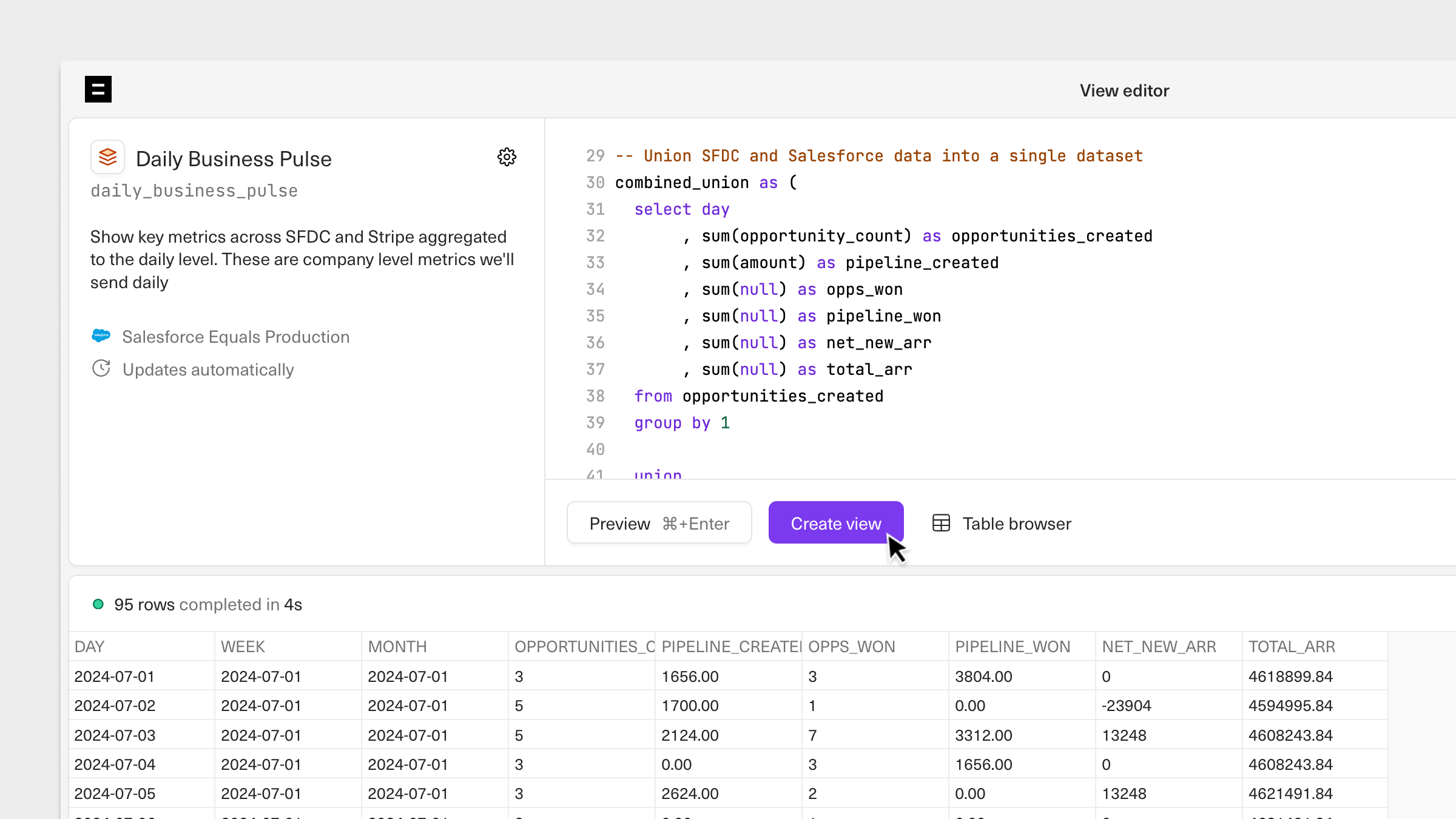
Editing views
You can edit a view at any point after it has been synced:
- Select your view from the views list.
- Click
Edit SQL. - Make any necessary changes to the SQL query.
- Click
Save and rebuildto save your changes and re-sync the updated view to your data schema. If your view has dependencies, you'll be notified that any changes to your view may impact other views.
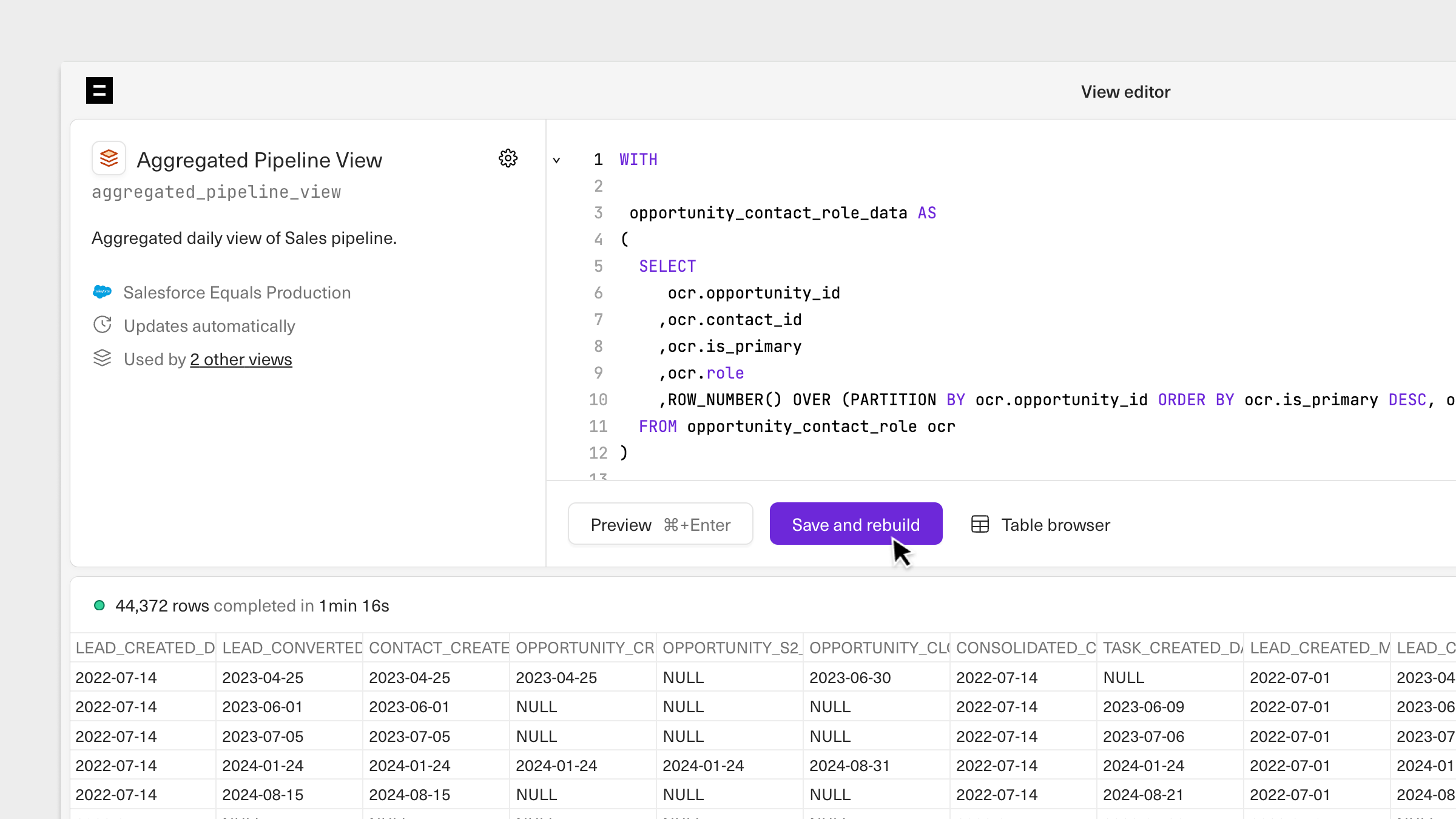
Deleting views
To delete a view:
- Navigate to the views list.
- Click the
...button next to the view you want to delete. - Confirm deletion by selecting
Delete view.
If the view you want to delete has dependencies, you will be prompted to either delete or edit the dependent views before you can delete the original.
Updated 6 months ago
